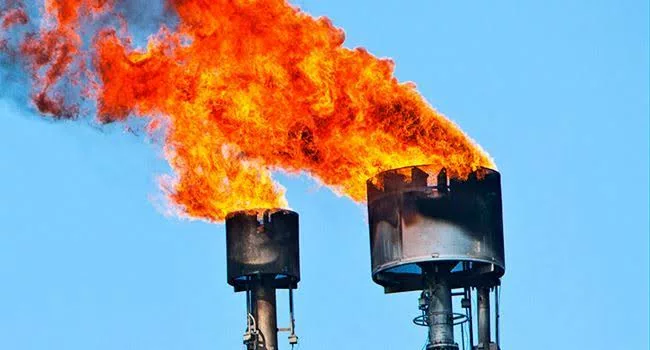Despite the continuous shortage of gas for electricity generation companies to power their turbines with, Nigeria is still losing massive revenue and generation potential to the persistent gas flaring by oil companies operating in the country.
The country has continued to suffer losses from its gas, as companies operating in the country’s petroleum industry flared 241.1 million standard cubic feet, MSCF, of gas in the first 11 months (January – November) 2023, according to latest data from the National Oil Spill Detection and Response Agency, NOSDRA.
Recall that Egbin Power Plant is Nigeria’s largest thermal generating station in Lagos, with an installed capacity of 1,320 MW to the country’s national grid was forced to shut operations following issues around gas supply to the station.
It said the shutdown of the station would reduce power generation by 676MW of bulk power generated into the nation’s grid for 72 hours.
This means a reduction of 676MW of bulk power generated into the nation’s grid for three days and consequently the quantum of bulk power available to be delivered to distribution companies’ load centres
NOSDRA put the value of the 241.1 MSCF flared in the said period of 2023 at $843.7 million, adding that going by the Central Bank of Nigeria’s, CBN current official exchange rate of N832.32/$, this translates to a loss of N702.2 billion potential revenue.
This represents 18.9 per cent increase when compared to 195.5 mscf of gas flared in the corresponding period of 2022.
NOSDRA also stated that the defaulting companies were liable to fines totaling $482.1 million, an equivalent of N401.3 billion.
According to NOSDRA, the volume of gas flared during the period under review was equivalent to carbon dioxide emission of 673.1 thousand tonnes; and had a power generation potential of 24,100 gigawatts hour, GWh.
Providing a further breakdown of the volume of gas flared across oilfields, NOSDRA disclosed that companies operating offshore flared 132.9 mscf while companies operating onshore flared 108.1 mscf.
NOSDRA lamented that despite efforts to reduce gas flaring, it has continued in Nigeria since the 1950s, releasing carbon dioxide and other gaseous substances into the atmosphere.
Industry experts say the volume of gas flared can generate megawatts of electricity that will power millions of households. According to the United States Energy Information Association, one megawatt (MW) of electricity can meet the needs of 1,000 households.
Total electricity generation in Africa’s most populous nation stood at 4,212.86MW as of 6am on Wednesday, compared to an installed capacity of 13,014.14MW, data from the Nigerian Electricity System Operator shows.
As of 2021, over 85 million Nigerians lacked access to electricity, according to the World Bank.
“The demand or consumption rate for electricity in an average or typical Nigerian home depends on several factors, one of which is the location, either rural or urban area,” said Ayodele Oni, an energy expert and partner at Bloomfield Law Practice.
Experts have stressed the need for gas commercialisation, proper gas regulation, the development of floating Liquefied Natural Gas, and amendment of the Petroleum Industry Act (PIA).
“The optimal strategy would be a practical push for gas commercialisation, supported by a robust infrastructure network. A portion of the Liquefied Petroleum Gas (LPG) consumed locally is imported; although the exact percentage is uncertain,” Preye David Orodu, lead engineer at KEOT Synergy, told BusinessDay.
“By promoting gas commercialisation, we can attract investment, thereby lessening our reliance on imports,” he said. “The commercialisation process should stimulate investment in well-designed, efficient modular processing facilities.”
According to Orodu, these facilities would capture flared gas at well sites, creating profitable clusters both at well sites and flow stations. Success hinges on setting appropriate gas pricing for local consumption and capitalising on additional benefits throughout the value chain beyond LPG, he said.
Nigeria lost $22.9 billion to gas flaring in 10 years, from 2011 to 2021, according to NOSDRA.





